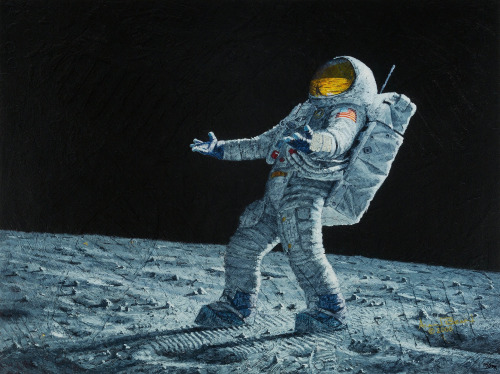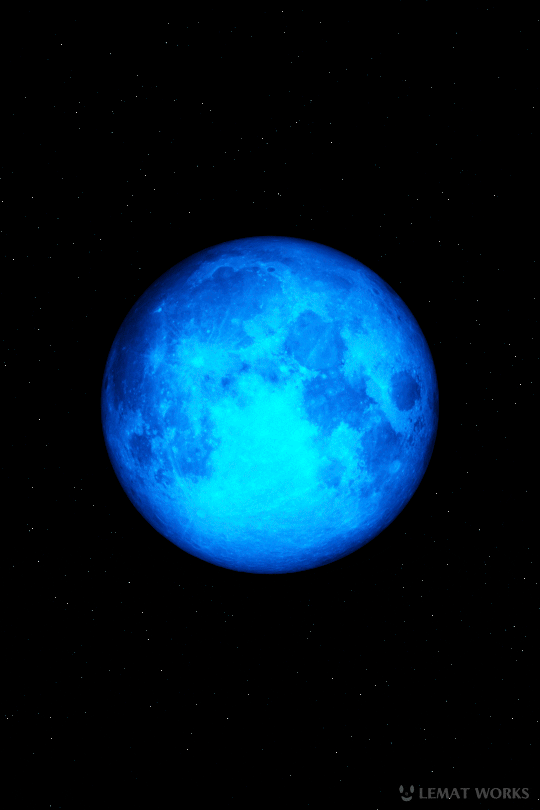O_o When We Peer Deep Into Space, We Don’t Expect To Find Something Staring Back At Us…

O_o When we peer deep into space, we don’t expect to find something staring back at us…
This galactic ghoul, captured by our Hubble Space Telescope, is actually a titanic head-on collision between two galaxies. Each “eye” is the bright core of a galaxy, one of which slammed into another. The outline of the face is a ring of young blue stars. Other clumps of new stars form a nose and mouth.
Although galaxy collisions are common most of them are not head-on smashups like this Arp-Madore system. Get spooked & find out what lies inside this ghostly apparition, here.
Make sure to follow us on Tumblr for your regular dose of space: http://nasa.tumblr.com
More Posts from Epic-flight and Others

Glacial - 220919

Design graphics Geya Shvecova (Smoky_MOON_171219)

Ghost Form.
Boo-tiful Ring Galaxies

A ghoulish secret lurks within each of these gorgeous galaxies. Their rings are dotted with stellar graveyards!

These objects are called ring galaxies, and scientists think most of them form in monster-sized crashes. Not just any galaxy collision will do the trick, though. To produce the treat of a ring, a smaller galaxy needs to ram through the center of a larger galaxy at just the perfect angle.

The collision causes ripples that disturb both galaxies. The gravitational shock causes dust, gas, and stars in the larger galaxy’s disk to rush outward. As this ring of material plows out from the galaxy’s center, gas clouds collide and trigger the birth of new stars.

In visible light, the blue areas in the galaxies’ rings show us where young, hot stars are growing up. Faint, pink regions around the ring mark stellar nurseries where even younger stars set hydrogen gas aglow.
The newborn stars come in a mix of sizes, from smaller ones like our Sun all the way up to huge stars with tens of times the Sun’s mass. And those massive stars live large!
While a star like our Sun will last many billions of years before running out of fuel, larger stars burn much brighter and faster. After just a few million years, the largest stars explode as supernovae. When massive stars die, they leave behind a stellar corpse, either a neutron star or black hole.

When we turn our X-ray telescopes to these ring galaxies, we see telltale signs of stellar remnants dotted throughout their ghostly circles. The purple dots in the X-ray image above are neutron stars or black holes that are siphoning off gas from a companion star, like a vampire. The gas reinvigorates stellar corpses, which heat up and emit X-rays. These gas-thirsty remains are beacons lighting the way to stellar graveyards.
Spiral galaxies — like our home galaxy, the Milky Way — have curved arms that appear to sweep out around a bright center. The dust and gas in those spiral arms press together, causing cycles of star formation that result in a more even mix of new stars and stellar corpses scattered throughout our galaxy. No creepy ring of stellar corpses here!
To visit some other eerie places in the universe, check out the latest additions to the Galaxy of Horrors poster series and follow NASA Universe on Twitter and Facebook for news about black holes, neutron stars, galaxies, and all the amazing objects outside our solar system.
Make sure to follow us on Tumblr for your regular dose of space: http://nasa.tumblr.com

Eclipse.

What we are doing while you sleep
-
 vhincent liked this · 2 months ago
vhincent liked this · 2 months ago -
 thegirlsinthecity liked this · 1 year ago
thegirlsinthecity liked this · 1 year ago -
 bugeyedcreature reblogged this · 1 year ago
bugeyedcreature reblogged this · 1 year ago -
 bugeyedcreature liked this · 1 year ago
bugeyedcreature liked this · 1 year ago -
 waybacksounds liked this · 1 year ago
waybacksounds liked this · 1 year ago -
 thegirlsinthecity reblogged this · 1 year ago
thegirlsinthecity reblogged this · 1 year ago -
 ravexandxlust liked this · 1 year ago
ravexandxlust liked this · 1 year ago -
 dying-offeels liked this · 2 years ago
dying-offeels liked this · 2 years ago -
 gsunny6 reblogged this · 2 years ago
gsunny6 reblogged this · 2 years ago -
 celisya liked this · 2 years ago
celisya liked this · 2 years ago -
 theredtomb reblogged this · 2 years ago
theredtomb reblogged this · 2 years ago -
 thismeddlingkid liked this · 3 years ago
thismeddlingkid liked this · 3 years ago -
 bestassinthegalaxy reblogged this · 3 years ago
bestassinthegalaxy reblogged this · 3 years ago -
 suranoise reblogged this · 3 years ago
suranoise reblogged this · 3 years ago -
 leben-heute2020 liked this · 4 years ago
leben-heute2020 liked this · 4 years ago -
 beynbeyn reblogged this · 4 years ago
beynbeyn reblogged this · 4 years ago -
 beynbeyn liked this · 4 years ago
beynbeyn liked this · 4 years ago -
 nlockett reblogged this · 4 years ago
nlockett reblogged this · 4 years ago -
 nlockett liked this · 4 years ago
nlockett liked this · 4 years ago -
 mysterious-sludge reblogged this · 4 years ago
mysterious-sludge reblogged this · 4 years ago -
 mysterious-sludge liked this · 4 years ago
mysterious-sludge liked this · 4 years ago -
 sleepyphot0 reblogged this · 4 years ago
sleepyphot0 reblogged this · 4 years ago -
 sleepyphot0 liked this · 4 years ago
sleepyphot0 liked this · 4 years ago -
 omnifuckery reblogged this · 4 years ago
omnifuckery reblogged this · 4 years ago -
 omnifuckery liked this · 4 years ago
omnifuckery liked this · 4 years ago -
 almostluckyperson liked this · 4 years ago
almostluckyperson liked this · 4 years ago -
 coco-cookie9 liked this · 4 years ago
coco-cookie9 liked this · 4 years ago -
 huseyinozdemirerk liked this · 4 years ago
huseyinozdemirerk liked this · 4 years ago -
 relatospropios liked this · 4 years ago
relatospropios liked this · 4 years ago -
 its-a-story-about reblogged this · 4 years ago
its-a-story-about reblogged this · 4 years ago -
 flufflyspartan110 liked this · 4 years ago
flufflyspartan110 liked this · 4 years ago -
 stuckimaginationuniverse reblogged this · 4 years ago
stuckimaginationuniverse reblogged this · 4 years ago -
 stuckimaginationuniverse liked this · 4 years ago
stuckimaginationuniverse liked this · 4 years ago -
 aunty-matter liked this · 4 years ago
aunty-matter liked this · 4 years ago -
 durinsbride reblogged this · 4 years ago
durinsbride reblogged this · 4 years ago -
 durinsbride liked this · 4 years ago
durinsbride liked this · 4 years ago -
 freeponi liked this · 4 years ago
freeponi liked this · 4 years ago -
 jack-first-ofher-name liked this · 4 years ago
jack-first-ofher-name liked this · 4 years ago






